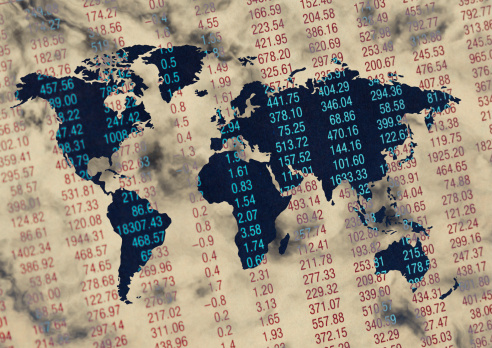Health and Healthcare
How Ebola Could Cost the World $32 Billion by End of 2015
Published:
Last Updated:
The Ebola outbreak has so far been limited, even before considering the reported cases in the United States and Spain. Still, it has been disastrous in Africa and it could get a lot worse. The latest death toll from Ebola was shown as currently being 3,439 in the three nations of Guinea, Liberia and Sierra Leone. Now we have an economic impact assessment from The World Bank that projects what the potential costs could be if the epidemic were to significantly infect people in neighboring countries where there are much larger economies. It is massive when you consider that this is covering Africa — the two-year regional financial impact was projected to be up to $32.6 billion by the end of 2015.
Comparing the cost when there have been more than 3,400 deaths is hard for many to mentally grasp. Still, it takes funding to treat and contain virus and disease outbreaks. It also can cripple economies during an outbreak.
The World Bank’s new analysis shows that the economic impacts of Ebola are already very serious in the core three countries. The forecast warns that the cost could become catastrophic under a slow-containment, high Ebola scenario.
The good news: the economic impact could be limited if immediate national and international action stop the epidemic. In broader regional and economic terms, it should be kept in mind that neighboring countries have limited border access, airline flights and transportation have already been interrupted, and all of this limits trade.
ALSO READ: The Worst Economies in the World
The new World Bank group report said:
As it is far from certain that the epidemic will be fully contained by December 2014 and in light of the considerable uncertainty about its future trajectory, two alternative scenarios are used to estimate the medium-term (2015) impact of the epidemic, extending to the end of calendar year 2015. … With Ebola’s potential to inflict massive economic costs on Guinea, Liberia, and Sierra Leone and the rest of their neighbors in West Africa, the international community must find ways to get past logistical roadblocks and bring in more doctors and trained medical staff, more hospital beds, and more health and development support to help stop Ebola in its tracks.
A “low Ebola” scenario corresponds to rapid containment within the three most severely affected countries, while “high Ebola” corresponds to slower containment in the three countries, with broader regional contagion. 24/7 Wall St. has also outlined the cost elsewhere of these outbreaks. We have signaled the following nations in an Ebola analysis:
24/7 Wall St. showed what the major fallout was in the Ebola drug candidate stocks after the Ebola case was confirmed in the United States. With fresh reports that air passengers leaving Ebola regions will face additional screening at airports and the like, this Ebola outbreak’s impact seems far from being over any time soon.
ALSO READ: The Most Corrupt Countries in the World
Start by taking a quick retirement quiz from SmartAsset that will match you with up to 3 financial advisors that serve your area and beyond in 5 minutes, or less.
Each advisor has been vetted by SmartAsset and is held to a fiduciary standard to act in your best interests.
Here’s how it works:
1. Answer SmartAsset advisor match quiz
2. Review your pre-screened matches at your leisure. Check out the advisors’ profiles.
3. Speak with advisors at no cost to you. Have an introductory call on the phone or introduction in person and choose whom to work with in the future
Thank you for reading! Have some feedback for us?
Contact the 24/7 Wall St. editorial team.